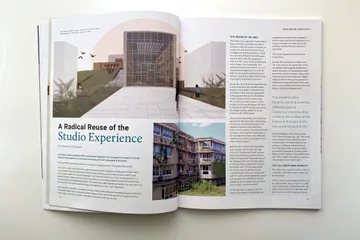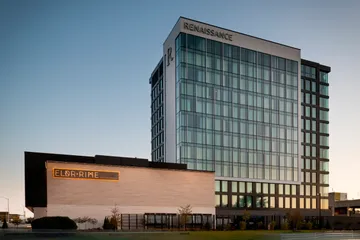What is Adaptive Reuse? Insights and Incentives for Reconsidering Existing Buildings
by Jeremy Happel, AIA
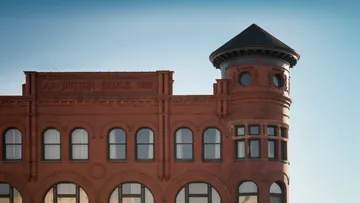
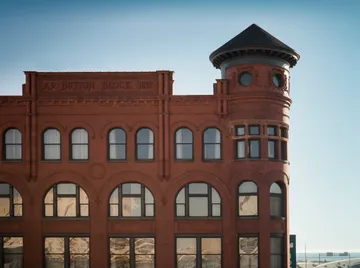
Around the country, existing building stock continues to shift - especially as we live with post-pandemic realities. As responsible designers and community members, we often encourage our clients to take a look at how we can repurpose and reimagine buildings for new uses. Architect Jeremy Happel sheds some light on exactly what Adaptive Reuse means and how rethinking a building can preserve a community's unique fabric.
Enriching Life Through Reuse
Carl Elefante, FAIA, coined the statement “the greenest building is...one that is already built” in 2007, and research bears evidence to support the thesis. A 2016 study from The National Trust for Historic Preservation (NTHP) concludes that, “when comparing buildings of equivalent size and function, building reuse almost always offers environmental savings over demolition and new construction.” The study revealed it can take between 10-80 years and on average 20-30 years for a new building to overcome the initial carbon impact of new construction.
Sustainability and Resilience
Sustainability and preservation efforts have traditionally subscribed to a “first, do no harm” approach, but in recent years the fields have embraced a more holistic and dynamic framework centered on urban-scale issues of economic vitality, equity and resiliency; a strategy NTHP refers to as “ReUrbanism”. Adaptive Reuse – the renovation and reuse of pre-existing structures for new purposes – is central to the success of this strategy. A growing body of research supports a relationship between building reuse and positive indicators of economic, social and environmental health.
Benefits aside, the sheer magnitude of building construction since World War II – equal parts urban, suburban and exurban – all but necessitates building reuse as a critical arrow in the AEC and real estate industry’s resilience quiver. Our abundance of existing buildings points to estimates that more than twice as many will be renovated as newly constructed over the next 30 years. Shifting building stock due to the pandemic may provide increased opportunities to reimagine these spaces in new ways.
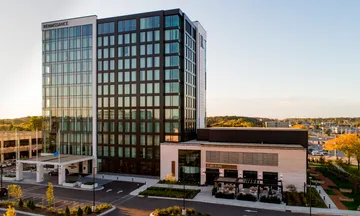
Preservation and Adaptive Reuse
The term “historic preservation” carries with it many misconceptions, a central one being that it is restrictive and prohibitive; but preservation and adaptive reuse are not mutually exclusive. The adaptive reuse of an existing building – especially one that is underutilized, vacant or neglected – is by its very nature an act of preservation. At stake is not just a building, but also the culture and authenticity inherent to that place. It is exactly this type of preservation that allows buildings, neighborhoods and communities to be dynamic and resilient. What constitutes “historic” is also dynamic. Many underutilized existing buildings meet or will soon meet the National Register of Historic Places (NRHP) age criteria of 50 years, potentially qualifying them for financial incentives to rehabilitate.
Incentives for Reuse
Preservation and development are often viewed as being at odds with one another, and adaptive reuse as too costly an option. On the contrary, public, private and non-profit entities have a long history of financially incentivizing and streamlining development through the rehabilitation and reuse of existing buildings. One such effort is a 2017 study published by NTHP and the Urban Land Institute (ULI) identifying key strategies for revitalization and reuse. In recognizing the existing urban fabric as an irreplaceable civic asset, the study is a call to action at a grassroots level. Acknowledging the local barriers to building reuse is a critical step towards re-shaping local policy to promote it as a viable and sustainable option. These types of partnerships are in keeping with the NTHP’s goal that “adaptive reuse should be the default, and demolition a last resort”.
Marketplace Experts
Historic buildings remind us that design matters. The tectonic, material and spatial strategies of these buildings embody the principles of sustainability and resilience because they had to. While we have had many advances in technology over the years, historical buildings can teach us many things about energy-efficiency.
It is worth acknowledging that adaptive reuse projects are not easy, are not for everyone, and are certainly not one-size-fits-all. Owners can benefit from an experienced partner to help guide them through the challenging process. Kahler Slater’s marketplace experts are up to the challenge, with a demonstrated track record of enriching life and achieving powerful results through the places we design, and a diverse portfolio of award-winning historic tax credit and adaptive-reuse projects.
Want to learn more? Connect with Jeremy by email or via LinkedIn. Also, be sure to see our article on Hotel Northland's Comeback Story: Why We Should Care About Preservation.
